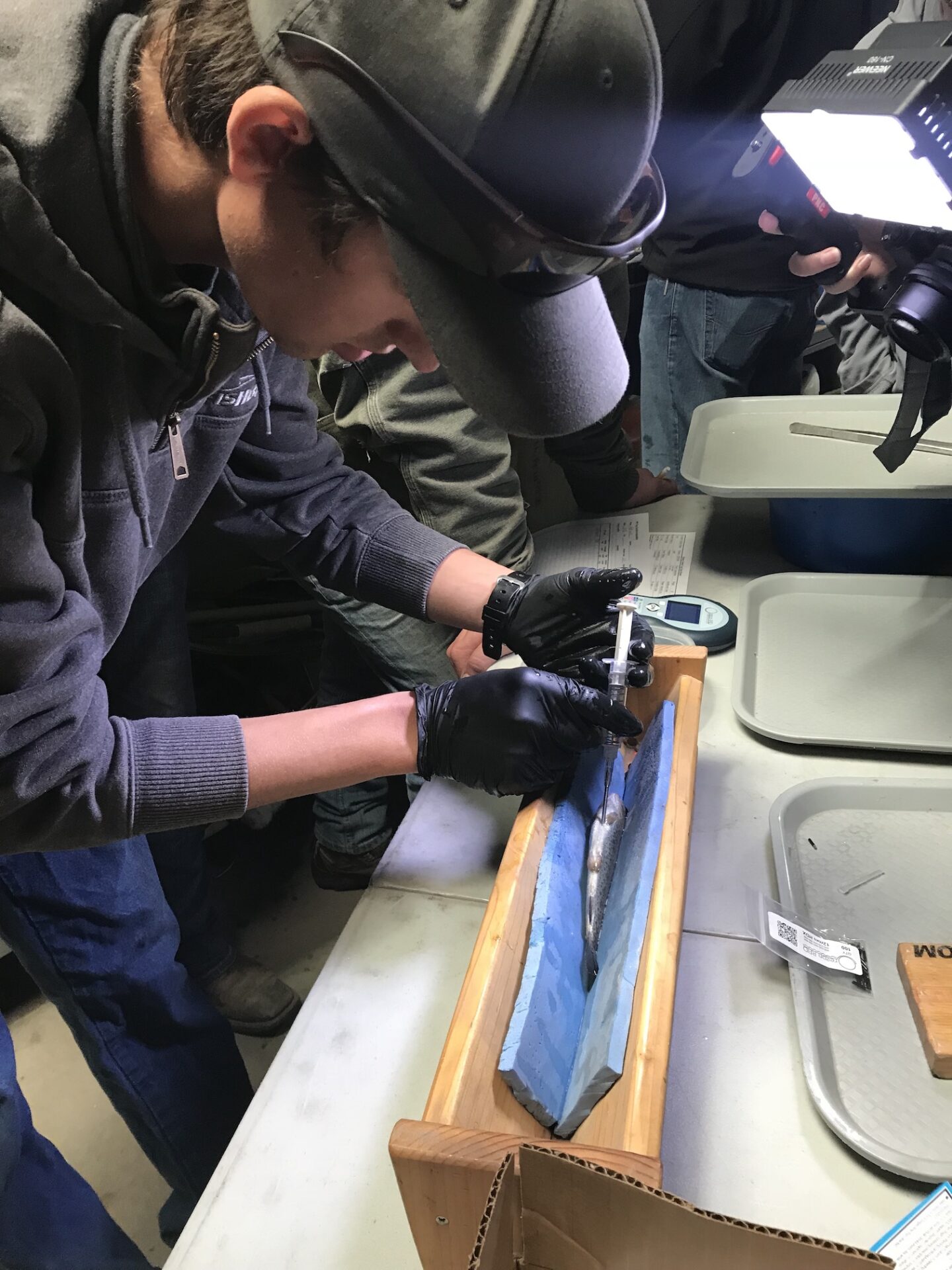Wednesday March 14, 2018
With a new mark-recapture project getting underway in the San Joaquin River, we recently held a training at our Oakdale office to make sure all of our field crew have their fish tagging skills up to speed. We tag fish for a variety of reasons at FISHBIO. Sometimes we mark juvenile salmon with temporary dye to test the efficiency of our rotary screw traps. Sometimes we use sophisticated tags, such as acoustic tags, to track the movement of a fish. And sometimes we want to apply a simple but lasting tag with a unique number to help us identify a fish if we recapture it in the future. The recent training focused on applying colorful external t-bar and disc tags, as well as internal Passive Integrated Transponder (PIT) tags that will be used as part of our mark-recapture study to estimate the fish population sizes in the San Joaquin River.

The training was a good refresher, since we also use PIT tags to monitor steelhead on one of our study rivers. PIT tags are like the microchips implanted in cats or dogs, and can be used to assign each fish a unique code. The tags do not have an internal battery, so they never expire, and are read using radio frequency to excite the tags at an antenna or hand-held reader. We tag rainbow trout (Oncorhynchus mykiss) to see whether they stay in fresh water or go out to the ocean and return a few years later. To apply the tags, we make a small incision in the abdomen of the fish behind the pectoral fins and slide the tag into the open cavity. After a small amount of glue is applied to quickly seal up the incision, the fish is back in the water within seconds to continue its journey. With a few rounds of practice in our Fish Lab under their belts, our crews are ready to be efficient and effective fish taggers.


